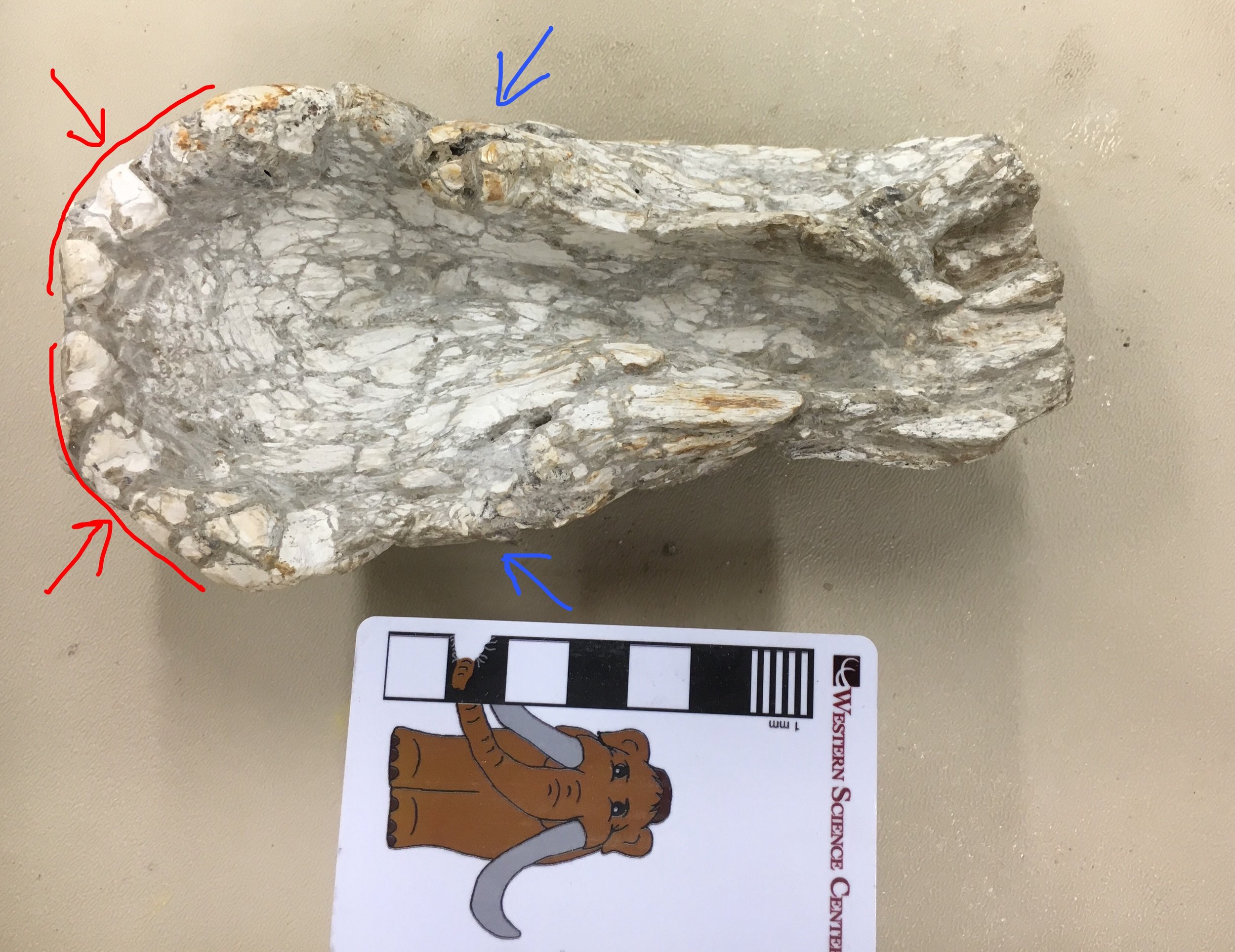 While the majority of Ice Age fossils in Riverside County are from the Diamond Valley Lake excavation, there are a few other productive Pleistocene sites. As with DVL, these have mostly been found during construction projects. The specimen shown above was recovered from The Promenade shopping mall in Temecula.While badly crushed, the specimen is the tip of the lower jaw of a horse. It's shown in dorsal view, with anterior to the left. Mammal lower jaws are made up of two bones, the left and right dentaries. In most species the dentaries are fused together at the chin, in what's technically called the mandibular symphysis; that's what's preserved here.There are actually portions of 8 teeth present in this fragment, although they're poorly preserved. In the marked-up image below, the red areas are indicating the positions of the 6 lower incisors (3 on each side), while the blue arrows are pointing at the bases of the canines (
While the majority of Ice Age fossils in Riverside County are from the Diamond Valley Lake excavation, there are a few other productive Pleistocene sites. As with DVL, these have mostly been found during construction projects. The specimen shown above was recovered from The Promenade shopping mall in Temecula.While badly crushed, the specimen is the tip of the lower jaw of a horse. It's shown in dorsal view, with anterior to the left. Mammal lower jaws are made up of two bones, the left and right dentaries. In most species the dentaries are fused together at the chin, in what's technically called the mandibular symphysis; that's what's preserved here.There are actually portions of 8 teeth present in this fragment, although they're poorly preserved. In the marked-up image below, the red areas are indicating the positions of the 6 lower incisors (3 on each side), while the blue arrows are pointing at the bases of the canines ("wolf teeth" in horse terminology Eric Scott pointed out to me that the "wolf teeth" are actually vestigial 1st premolars, not the canines, so that while these teeth are canines they are not wolf teeth): WSC volunteer Joe has been cleaning this specimen, and is working on other associated fragments. It looks like we probably have additional material from this jaw, which I'll post once it's further prepared.
WSC volunteer Joe has been cleaning this specimen, and is working on other associated fragments. It looks like we probably have additional material from this jaw, which I'll post once it's further prepared.
